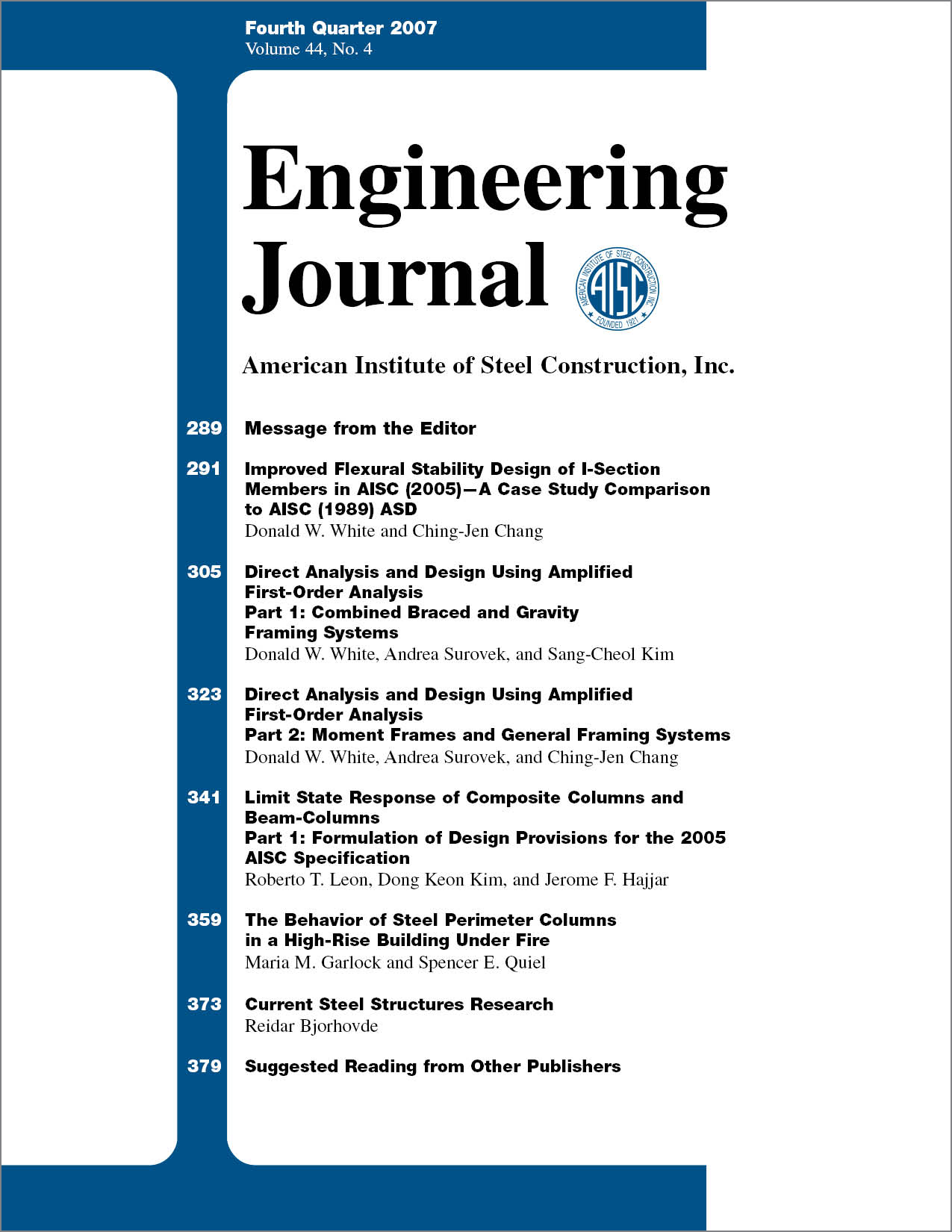The Behavior of Steel Perimeter Columns in a High-Rise Building Under Fire
DOI:
https://doi.org/10.62913/engj.v44i4.918Keywords:
Fire and Temperature EffectsAbstract
The thermal response of structural steel may affect the behavior of a steel high-rise building exposed to fire. In a plane perpendicular to the exterior wall, a perimeter column is typically laterally braced by one beam. The fire-induced structural response of this beam that frames into the perimeter column (perpendicular to the exterior wall) directly affects the perimeter column behavior and the structural integrity of the frame as a whole. The objective of this research is to evaluate the behavior of perimeter columns in a steel high-rise building that is subjected to a large fire, and examine this behavior as it interacts with the beams that frame into it. This behavior is examined by several analyses that consider the inclusion of fire protection material on the beams and columns as a parameter. A two-dimensional model of eleven upper level floors of a steel framed building subjected to fire is analyzed. The thermal expansion of the beams that frame into the perimeter column induce column lateral deformations and moments that combine with axial gravity forces to create a plastic hinge in the perimeter columns. Since these beams are partially restrained from expanding, large axial forces develop in them, which, combined with bending moments, may lead to beam failure. Once these beams, which brace the perimeter column in one plane, fail, the stability of the column, and structure as a whole, is compromised and could potentially lead to structural collapse. The results of this research confirm the design philosophy in current codes that recommends the same level of fire protection material for these beams as the columns to which they are attached since they significantly affect perimeter column behavior and thus the overall behavior of the frame. This study also shows that the perimeter columns and beams act as beam-columns in a fire (in other words, members under combined axial load and bending) and therefore their behavior and capacity should be evaluated as such.

